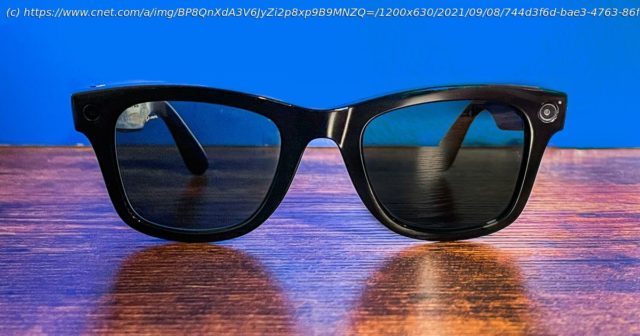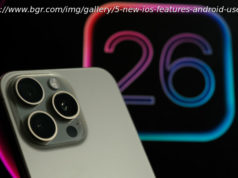Facebook’s Ray-Ban Stories sunglasses feel almost normal at times. And, of course, utterly abnormal. And also very familiar. I’ve used products like …
Facebook’s Ray-Ban Stories sunglasses feel almost normal at times. And, of course, utterly abnormal. And also very familiar. I’ve used products like this, off and on, for years. Welcome to Facebook’s first smart glasses. After promising smart glasses for years, Facebook’s first glasses are disappointingly familiar. These aren’t AR glasses at all. They don’t have displays in them. Instead, they’re a blend of technologies that have already been in other glasses: they have cameras in them, and microphones, and speakers. They’re headphones and camera-glasses in one, and that’s about it. That’s what I expected based on Mark Zuckerberg’s recent expectation-setting comments this year, but I’m still surprised these don’t push the envelope a bit more. The partnership with the massive glasses manufacturer EssilorLuxottica, and the design, are the interesting parts. Ray-Ban Stories is an odd name for the $299 (£299, AU$449) glasses, which are available now at Ray-Ban stores and will be arriving at retailers such as LensCrafters next week. But the glasses don’t mention Facebook in the branding very much. Also, they’re a clear attempt to take the torch from Snapchat’s similarly featured camera-enabled Spectacles, as well as audio-enabled glasses such as the Bose Frames and Amazon Echo Frames. Really, they’re a fusion of the two ideas. And at the moment, they’re not much more than that, even if Facebook promises to go much further in future products. But first, Facebook is going to have to bridge the territory of privacy — not just for those who might have photos taken of them, but for the wearers of these microphone and camera-equipped glasses. VR headsets are one thing (and they come off your face after a session). Glasses you wear around every day are the start of Facebook’s much larger ambition to be an always-connected maker of wearables, and that’s a lot harder for most people to get comfortable with. Walking down my quiet suburban street, I’m looking up at the sky. Recording the sky. Around my ears, I hear ABBA’s new song, I Still Have Faith In You. It’s a melancholic end to the summer. I’m taking my new Ray Ban smart glasses for a walk. The Ray-Ban Stories feel like a conservative start. They lack some features that have been in similar products already. The glasses, which act as earbud-free headphones, don’t have 3D spatial audio like the Bose Frames and Apple’s AirPods Pro do. The stereo cameras, on either side of the lenses, don’t work with AR effects, either. Facebook has a few sort-of-AR tricks in a brand-new companion app called View that pairs with these glasses on your phone, but they’re mostly ways of using depth data for a few quick social effects. And yes, these glasses need your phone. They’re basically phone peripherals. I tested the Ray-Ban Stories paired with an iPhone 12 Pro. And while my Ray-Ban glasses have sunglass lenses, they can be outfitted with polarized and prescription lenses. These could be my everyday glasses. But right now, my review units didn’t come prescription-equipped, so I used contacts when I wore them around. Here’s what my first week with them has been like. The glasses, which come in several different designs and lens colors, are impressive because they seem so nearly normal, even more so than the Amazon and Bose versions. The Ray-Ban Stories look innocuous at first, but they’re still not everyday normal — the arms are thick, and the charging case they come in is particularly shaped just for these glasses. And there are camera lenses in the corners of the frames. At a distance, they seem invisible. But up close, the lenses are clearly there. Staring. The Ray-Bans I tried were the Wayfarers model, but there are two other models to choose from: Round and Meteor. These glossy black Ray-Bans totally look like my years-old, falling-apart Ray-Ban sunglasses, even up close. They feel less like tech, and more like glasses. There are several colors (shiny black, black matte, shiny blue, shiny olive and shiny brown), and six lenses (G-15 green, photochromatic G-15 green, dark gray, polar dark blue, brown gradient and clear). There are polarized and transition options, and they should be compatible with standard prescriptions, too. In a lot of ways, the normal look of these glasses feels like their greatest achievement. I had friends and family who were surprised that these were smart glasses, even when they were standing next to me up close.






